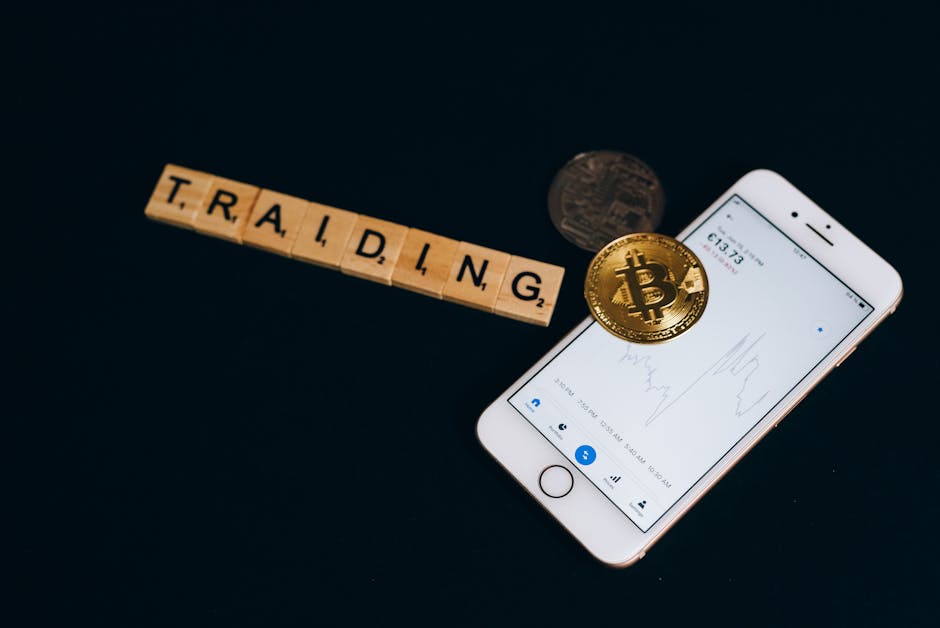Understanding Blockchain: More Than Just Crypto
What Is Blockchain (And Why Should You Care)?
Before diving into trends and transformations, it’s important to lay the foundation. Blockchain is a decentralized, distributed digital ledger technology. It records transactions across a network of computers, ensuring transparency, security, and immutability—without relying on a central authority.
In simpler terms:
- Data is shared, not stored in one place
- Every transaction is verified and time-stamped
- Once entered, information can’t be retroactively altered
This structure creates built-in trust, efficiency, and traceability—features that go far beyond cryptocurrency.
Common Myth: “Blockchain Equals Bitcoin”
One of the biggest misconceptions is that blockchain only powers cryptocurrencies like Bitcoin or Ethereum. While it did provide the backbone for digital currencies, blockchain is not limited to finance.
The reality:
- Blockchain isn’t synonymous with crypto—it’s the tech behind it
- Crypto is just one use case out of many
- You don’t have to invest in tokens to benefit from blockchain innovation
Spoiler Alert: Quietly Disrupting Multiple Industries
Blockchain is making a strong but often quiet impact across diverse sectors. It’s not always flashy or headline-grabbing, but it’s happening behind the scenes—and fast.
Sectors being reshaped include:
- Supply Chain Management: Real-time product tracking from origin to shelf
- Healthcare: Secure storage and sharing of patient records
- Digital Identity: Decentralized ID verification tools
- Voting Systems: Transparent, tamper-proof election processes
- Entertainment and IP: Smart contracts to protect creative ownership and revenue
This technology is laying the groundwork for a more transparent, decentralized future—one industry at a time.
Why It Matters Now
As businesses seek more efficient, secure, and trustworthy systems, blockchain is becoming a go-to solution. Whether you’re a creator, entrepreneur, consumer, or technologist, understanding what blockchain really is—and what it’s not—can help you see where the digital world is headed.
Smart Contracts Are Trimming the Middlemen
What Are Smart Contracts?
Smart contracts are self-executing agreements written in code and deployed on blockchain networks. These contracts automatically carry out terms once predetermined conditions are met—no external oversight or manual intervention needed.
Key characteristics:
- Autonomous: Operate without human involvement once launched
- Transparent: Terms are visible and verifiable by all parties
- Immutable: Cannot be altered once deployed
How They Work
At their core, smart contracts follow a simple structure: If X happens, then execute Y. For example, if a buyer sends payment, a contract might automatically release a digital asset or initiate a service.
This automation eliminates the need for intermediaries like lawyers, brokers, or notaries—making transactions faster, cheaper, and less prone to error.
Cutting Out the Middlemen
Smart contracts are already streamlining industries where trust, contracts, and enforcement are crucial. Two notable sectors include:
Insurance
- Claims can be verified and processed instantly
- Smart contracts release payouts based on third-party data (like weather APIs)
- Reduces fraud and administrative delays
Real Estate
- Facilitates property transfers through digital title deeds
- Automated escrow and payment triggers based on milestones
- Cuts out agents, banks, and cumbersome paperwork
Real-World Example: Crop Insurance with Satellite Data
Consider a farmer with crop insurance linked to satellite weather data. If rainfall falls below a certain threshold, a smart contract can detect this condition and automatically pay out the insurance—no need for a claims adjuster or long approval process.
Benefits:
- Speed: Instant analysis and payment
- Accuracy: Uses precise satellite-fed data
- Trustless execution: No human delay or subjectivity
This is just one way smart contracts are transforming traditional systems with greater efficiency and fairness.
Blockchain Brings Transparency From Farm to Shelf
Keeping track of where your product came from used to be a guessing game. Not anymore. Real-time tracking powered by blockchain is turning messy supply chains into clean, tamper-proof data trails. From the second a tomato is picked or a shirt is stitched, its journey can now be logged and verified—no fudging, no blind spots.
Big players like IBM and Walmart are already deep in this game. Walmart’s Food Trust, built on IBM’s blockchain tech, can trace a package of mangoes back to the farm in under three seconds. That’s not just impressive—it’s game-changing. It kills off fraud, simplifies recalls, and rebuilds trust in shaky global supply chains.
For consumers, this means more than just cool tech. It’s knowing the coffee you drink was ethically sourced. That the medication you take wasn’t tampered with. That the label on the packaging actually means something. Blockchain isn’t hype anymore—it’s a quiet revolution in how we trust what we buy.
Blockchain’s Role in Secure, Portable Patient Records
Healthcare still struggles with scattered data and siloed systems. A patient’s history often lives in half a dozen different databases, locked behind incompatible formats and old software. Blockchain offers a way out—by creating secure, tamper-proof records that travel with the patient.
Instead of filing cabinets or closed cloud servers, patient records can be stored on decentralized networks. That allows different providers—hospitals, clinics, specialists—to access and update data in near real-time, without sacrificing integrity. The result: less repetition, fewer paperwork headaches, and faster treatment decisions.
But the real shift comes in control. Blockchain lets patients decide who gets access to what, and for how long. No more blanket consent forms or data being passed around without oversight. Privacy and autonomy stop being afterthoughts—they’re built into the system.
When data moves securely and transparently, care gets smarter. And patients finally become the true owners of their medical story.
Blockchain-based voting has quietly moved from theory to practice. Estonia led the charge years ago with a digital-first government model, and their secure, blockchain-backed voting system has been running elections with little drama. In the U.S., smaller-scale pilots in states like Utah and West Virginia have explored remote voting for overseas citizens, using blockchain to log votes in a tamper-proof ledger.
The appeal is clear: transparency, audit trails, and security that makes fraud a lot harder to pull off. Instead of trust-by-tradition, it’s trust-by-code. Every vote can be traced without revealing personal identities, giving people—and election officials—more confidence in the process.
Beyond voting, blockchain IDs are making waves in parts of Africa and Southeast Asia. In regions where government ID infrastructure is either weak or nonexistent, decentralized ID systems let citizens prove who they are, access services, and move more freely in the digital world. These systems aren’t just about tech for tech’s sake—they’re emerging tools for inclusion.
The tech still has miles to go before it’s universally adopted, but the pilots prove one thing: political systems everywhere are at least asking the right questions. And blockchain is increasingly part of the answer.
Blockchain Tech Is Quietly Rewriting Creative Ownership
Blockchain isn’t dead—it’s just getting practical. Vloggers, musicians, designers, and writers are starting to use the tech not as a buzzword, but as a tool. One of the biggest shifts in 2024: using blockchain to securely track and manage royalties. This matters less for headline-grabbing NFT drops and more for straightforward, behind-the-scenes work. When a beat, a video, or a design gets reused, split royalties can now be automatically traced and enforced via smart contracts. No middleman, no confusion.
Verification is another area getting functional upgrades. Blockchain is giving creators an edge in proving ownership of original content, right down to timestamps and chain-of-custody records. That matters when AI-generated work floods the web and attribution gets blurry. Creators who want to protect their stuff—and prove it’s theirs—are using blockchain as a digital notary.
NFTs themselves are evolving too. We’re seeing fewer pixelated avatars and more use in licensing, memberships, and gated content access. Think of a vlogger offering backstage passes or monthly AMAs (Ask Me Anything) through token ownership—not another profile pic project. Blockchain’s hype might have cooled, but its real-world value is just getting started.
The New Digital Frontier: AR Meets Verified Ownership
Augmented Reality (AR) isn’t just about immersive filters and 3D overlays anymore—it’s rapidly becoming a legitimate space for commerce, content, and community. As AR environments grow more sophisticated, securing and authenticating digital assets within these spaces is emerging as a top priority for creators, brands, and users alike.
Where AR and Blockchain Converge
The fusion of AR technology with blockchain opens the door to exciting new applications across industries. This intersection allows for the verification, protection, and transfer of digital assets in real-time, within highly interactive environments.
Key developments include:
- Verified Digital Goods: Blockchain ensures that digital items—whether virtual clothing, art, or 3D objects—can be authenticated and traced to their original creator.
- Secure Transactions in AR Spaces: Users can buy, sell, or trade virtual goods with confidence, knowing ownership data is immutable and protected.
- Dual Layer Value: Both visual (AR) and functional (blockchain) layers add credibility and utility to digital possessions.
Why It Matters for Creators and Businesses
In 2024, creators are not just producing content—they’re building digital ecosystems. Augmented Reality adds new dimensions to how audiences interact with assets, while blockchain makes these interactions traceable and secure.
- Protect your intellectual property in virtual spaces
- Build immersive user experiences that maintain value over time
- Monetize AR-native digital products with built-in proof of ownership
Looking Ahead
As this space matures, expect to see more integrations between AR platforms and blockchain networks. Brands will launch NFT-enabled try-on experiences, creators will release virtual merch exclusive to specific AR worlds, and consumers will demand transparency around digital ownership.
Explore more in-depth: Augmented Reality in 2024 — Industries Leading the Way
Blockchain and Vlogging: The Tough Questions
When people talk about integrating blockchain into vlogging—whether for monetization, licensing, or community ownership—they often skip over the harder realities. Let’s not.
First, there’s energy. Blockchain technology, especially proof-of-work models, eats electricity like candy. While newer chains promise faster, greener transactions, many aren’t battle-tested at scale. Vloggers looking to tokenize their content or sell NFTs need to ask: is this energy-hungry tech worth it for a few hundred bucks and some novelty?
Scalability’s another friction point. Public blockchains can get bogged down when traffic spikes. For creators counting on fast, frictionless user experiences, delays kill momentum. If your viewers can’t access your tokenized content or verify ownership quickly, it’s not helping—it’s hurting.
Then there’s the legal mess. Blockchain remains a regulatory gray zone. Depending on where you live, launching a crypto-backed fan token might make you an unintentional securities issuer. That’s a headache most creators aren’t equipped to navigate without legal support.
Choosing between public and private blockchains adds another layer. Public chains offer transparency and community support—but less control. Private chains give better stability and speed, but come with a cost and a smaller user base. There’s no one-size-fits-all model. Vloggers need to align their goals (ownership, monetization, decentralization) with the type of chain powering those ambitions.
In short: blockchain in vlogging is intriguing, but not plug-and-play. Do the homework. Know the trade-offs.
Blockchain’s path mirrors the internet’s early growth: unnoticed until unavoidable
Blockchain isn’t loud, but it’s everywhere. Like the early internet, it started as a tool for the few—tech insiders, early adopters, crypto diehards. Now, it’s creeping into logistics, finance, entertainment, and yes, even content creation. Most people didn’t notice when it started showing up. In 2024, they won’t be able to ignore it.
The key shift? Blockchain is no longer about hype or speculation—it’s about utility. Creators are tokenizing premium content. Brands are using it for transparent supply chains. Platforms are experimenting with decentralized ownership models. You don’t have to be a coder to care. Whether you’re a business, creator, or consumer, the real value is in understanding where blockchain streamlines old systems or opens new revenue paths.
The smart move isn’t jumping blindly on the trend. It’s figuring out what part of your world blockchain actually improves—and using that, not buzzwords, to decide how to engage.


 Lead Software Strategist
Lead Software Strategist
